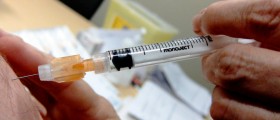
Genital human papillomavirus, also known as the HPV, is one of the most commonly sexually transmitted infections. There are about 200 different sorts of viruses from this family and they may cause the infection to both males and females.
There is much more public awareness about HPV associated health problems in women, as this virus increases women’s risk of developing cervical cancers. However, men suffering from HPV virus are also at increased risk of developing genital cancers. Moreover, both men and women may develop cancers of the anus and genital warts.
Sometimes these viruses are able to infect the mouth and throat, but great majority of these viruses does not cause any noticeable symptoms in humans.
Epidemiology
It is estimated that more than a half of sexually active men in the United States gets in contact with human papillomavirus at some point in their life. Most commonly, body fights on its own against the virus and it does not cause any health problems.
Approximately 30 strains of HPV virus may cause cancer of the anus or cancer of the penis in men. However, these viruses are quite rare and men with otherwise healthy and strong immune system are at extremely low risk of developing the disease. Bisexual and homosexual population is at increased risk, as well as those with compromised immune system. According to one scientific publication, 1250 men in the United States were diagnosed with cancer of the penis in 2008.
Other strains of HPV virus are generally responsible for genital warts. It is estimated that approximately 1% of sexually active men population in the United States has genital warts.
Symptoms and diagnosis
HPV infection is noticeable only if it causes genital warts in patients. Otherwise, this infection usually goes unnoticed. Genital wards disease is distinguished by small bump or cluster of bumps in the genital area. They are differently shaped, may be small or large, raised or flat. If left untreated they will eventually go away or increase in the size and number.
Cervical cancers, genital cancers and cancers of the anus, unfortunately, have no visible symptoms in the early stage of the disease. Any kind of change in the genital area is actually a warning sign that may point out to the presence of the disease.
To diagnose genital warts in men, doctors will usually visually examine men’s genital area or use a vinegar solution to recognize warts that are not otherwise visible. Papanicolau test is sometimes used to diagnose dangerous HPV strains that are responsible for cancer. There is no routine testing for men but some doctors are insisting on this test for men population that is at a higher risk. During the test, doctor collects the cells from anus and genital area and examines them in the lab, searching for the presence of the virus.








_f_280x120.jpg)








Your thoughts on this
Loading...